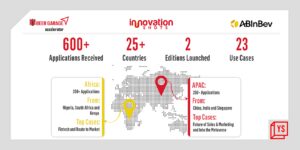The COVID-19 pandemic, while devastating to lives and livelihoods, also offered humanity the option of looking at it from two lenses — either as a crisis or an opportunity to grow. Telecom major Ericsson chose the latter, said Priyanka Anand, Vice-President and Head of HR, Southeast Asia, Oceania and India, during her talk on ‘Reimagining the workplace of the future’ on day two of Future of Work 2021.
“The past year has been a non-voluntary experiment in evaluating the ways of working virtually, taking advantage of digital tools, offering flexibility and reevaluating old truths,” Priyanka said, laying emphasis on how Ericsson accelerated its digital transformation journey during this time, to turn around things for its employees and customers.
Based on extensive internal surveys, Ericsson identified four key elements that will affect the future of work – emotional, physical, technological and the need for purposeful space. These are the aspects Ericsson has taken into account for its future of work outlook, which is dependent on collaboration between people and teams, and its leaders, Priyanka said.
“We feel well positioned to tackle the new normal – one that is focussed on co-creating and delivering flexible workplaces to ensure that employees and the company thrives and performs at their best to deliver great customer experience [sic],” she added.
To do so, a hybrid workplace is crucial, which offers employees both online and offline ways of working to collaborate and create an environment that fosters productivity, growth and efficiency. Flexibility is another key component, Priyanka said, adding that Ericsson has been focussed on giving people the choice of when and where they want to work from. “The new normal is not about work from home alone, but from anywhere. When we move to the next new normal, we will adapt to a new reality and decide the future of the workplace.”
What does the next new normal look like?
The past one year has given companies the opportunity to redefine offices. Ericsson is also reimagining its workplace towards a new hybrid, flexible model, Priyanka said, listing out four key advantages of such a workplace.
- Performance: When workplaces focus on an employee-centric environment, it boosts performance and productivity.
- Interaction: Ease of workspaces in a hybrid environment will foster opportunities to connect, collaborate and create.
- Energy creation: It keeps employees motivated and gives them the momentum to get through the day.
- Belongingness: Gives them a feeling of belonging and being a part of something bigger.
With this future-ready environment, Ericsson seeks to gain a competitive advantage over how it retains and engages its employees, she added.
While the hybrid and flexible models of the future are still in the making, the company came up with unique ways to offer them in the present, all of which enabled the team to deliver to customers and even overachieve targets.
It did so by creating an ‘anytime anywhere learning mindset’ and offering versatile content and context for employees to excel in their current roles. It also invested heavily in technology for reskilling and upskilling employees, and in digital tools to enable effective communication and collaboration. A prime focus during this past year was also on employee wellbeing, Priyanka said, with the launch of virtual employee assistance programs that provided access to counsellors and consultants for reducing physical, financial and emotional stress. The company also invested in a robust home-office set up for its employees so that they could create an environment within their homes to work effectively.
“Work is not the destination, but the journey and our leadership plays a key role in ensuring this as well,” Priyanka concluded.









![Read more about the article [Scoop] PhonePe receives over Rs 740 Cr capital infusion from Singapore parent](https://blog.digitalsevaa.com/wp-content/uploads/2022/10/phonepe11561023770690-1578482785956-300x150.png)
![Read more about the article [Funding alert] F&V startup Gourmet Garden raises Rs 25Cr led by Beyond Next Ventures, M Venture Partners and others](https://blog.digitalsevaa.com/wp-content/uploads/2021/07/Imageepjs-1625123295918-300x150.jpg)
